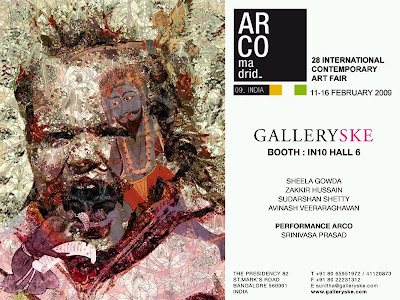(By Nalini S Malaviya)
The art market is hit hard and there is no getting away from it at the moment. But, all this talk about the recession can be quite depressing and I sincerely hope that this phase gets over as soon as possible.
While people are still buying art that is affordable, sales of mid and high end segments are highly affected. Buyers are now treading cautiously, and rightly so. Recently at the preview of an art exhibition one of the artists mentioned how thankful he was that he had not resigned from his day job. However, when the same artist said that he had slowed down the pace of his work as the demand was considerably less, it was reassuring. In my opinion some of the best works will emerge in the current phase. The furious frenzy to produce more works during the boom period will now be replaced by a more spaced output. Artists will have more breathing space and time to follow their creative instincts rather than follow popular demands. This is a good time for them to be experimental, dabble with different media, and come out with smaller works and maybe even an affordable line of works.
Collectors should take stock of their collections and think of getting it catalogued if it is sufficiently large and mark out the works which they would like to sell off. One should also consider insuring the more expensive or rare artworks. Unfortunately, insurance of art is still not a very popular trend in India, and very few companies are offering this. But, one could look around to find a policy that suits ones needs.
For buyers this is a good time to pick up quality works at competitive prices. Those who don’t know much about art but happen to be reading this could use the opportunity to get familiar with the art world. Those of you, who are looking at buying art at this point, should begin with a small budget. This is also a good time to network with people from the art fraternity and to attend art shows and other events. In short be positive and use the time constructively.
(Published in Bangalore Mirror)

